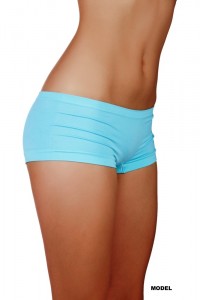Learning the Difference Between Body Contouring Procedures
 Like many things in cosmetic surgery, you can do a “little” or you can do “a lot”. When a patient comes in for body contouring consults the first issue is, can this patient get away with just liposculpting and avoid incisions for skin excision or muscle tightening? Liposuction is a marvelous procedure that can accomplish surprising results, but we must also remain realistic and guide patients to the right procedures to accomplish logical goals. Avoiding skin excision is more likely if the patient hasn’t had major weight changes, or pregnancies that can lead to skin laxity. In the case of pregnancies the internal connective tissue that gives support to the abdominal muscles can be stretched significantly, and all the sit-ups or exercise in the world won’t bring those supportive structures back to normal; it requires internal suturing to reef the tissues back to a more youthful position.
Like many things in cosmetic surgery, you can do a “little” or you can do “a lot”. When a patient comes in for body contouring consults the first issue is, can this patient get away with just liposculpting and avoid incisions for skin excision or muscle tightening? Liposuction is a marvelous procedure that can accomplish surprising results, but we must also remain realistic and guide patients to the right procedures to accomplish logical goals. Avoiding skin excision is more likely if the patient hasn’t had major weight changes, or pregnancies that can lead to skin laxity. In the case of pregnancies the internal connective tissue that gives support to the abdominal muscles can be stretched significantly, and all the sit-ups or exercise in the world won’t bring those supportive structures back to normal; it requires internal suturing to reef the tissues back to a more youthful position.
Liposuction and Laser Liposuction
While liposculpting and laser liposuction can provide some skin tightening, often the patient’s hopes and desires are beyond the reality of what skin tightening will occur from the healing process; just sometimes you have to accept that a tummy tuck type procedure is needed. A younger patient with good skin quality may get terrific skin contraction following liposuction procedures while the patient with thinner skin, many stretch marks, loose hanging skin will likely be underwhelmed by the skin contraction and disappointed. This is why an honest discussion with the Plastic surgeon and realistic assessment or photos of typical results leads to the right decisions being made on your behalf. Be wary of overselling of skin contraction; our job is to give you clear realistic impressions of what surgery can do for you. Sometimes that’s liposuction alone, sometimes liposuction with tummy tuck or occasionally abdominoplasty alone with no liposuction. Different strokes for different folks and different body types.
Tummy Tuck Variations
We’d all love to get away with liposuction only, but since bodies come in all sizes the Plastic surgeon has an armamentarium of tummy tucks to address the given situation. The common names for the types of tummy tucks are, the mini-abdominoplasty, abdominoplasty, panniculectomy, extended-abdominoplasty, and the circumferential-abdominoplasty or belt lipectomy. Each of these types of tummy tucks may or may not have some affiliated liposuction used with them. Let’s walk through these surgeries one at a time.
Mini Abdominoplasty
The typical mini-abdominoplasty is an incision of six to 10 inches in length that removes excess skin just above the mons pubis well below the belly button. The final incision is in a similar position to a C-section scar. This is well suited to the thinner patient with only a bit of loose skin lower on the abdomen. Modifications of the mini-abdominoplasty may have some degree of dissection to lift the skin and fat off the muscles and structures of the abdominal wall so some suturing of the muscles back closer together can be done. Occasionally we might disconnect the belly button at it’s internal connection on the belly wall and reconnect it a little lower allowing a bit more skin excision. This is called an “umbilical float” for we leave the belly button (umbilicus) attached to the normal outer skin and let it float down a touch as the mini-tummy tuck is done.
Regular Tummy Tuck
A regular tummy tuck or abdominoplasty will involve a cut around the belly button where it attaches to the outer skin and we leave it attached on the inside. A new belly button hole is cosmetically shaped and the original umbilical skin stalk is sewn into this new skin hole. Almost always when we do a regular tummy tuck we tighten up the stretched out internal structures. The midline tissue stretch is called Diastasis Recti, which is a fancy Latin way to say the six pack abs muscles have stretched apart. We suture them back closer together where they were when we were young. Also some patients benefit from reefing in some of the lateral muscles to make a better contour. These standard Abdominoplasties have longer incisions than mimi-abdominoplasties and remove all the skin and fat below the belly button to the pubis area. As I mentioned in the first line, you can do a little or you can do a lot so it’s easy to see that as patients have more loose skin going around their side or on their backs than we can extend these incisions as needed.
Extended Abdominoplasty
When the incision is taken well around the flanks and a bit onto the back the operation is called an extended abdominoplasty. If the procedure goes completely around the trunk front and back we call it a circumferential abdominoplasty. Both the extended and circumferential abdominoplasties require repositioning the patients so you can get the back and the front done. Different Plastic surgeons have different ways they may position or start the surgery, but either way it requires more time and repositioning to get all the areas we are after. The extended and circumferential surgeries take longer and are a bit more involved so frequently the surgeon will want you to stay a day in the hospital or a recovery center. The extended and circumferential operations are well suited for the major weight loss patient or patients a year or more after Bariatric (weight loss) surgery. While these types of tummy tucks are bigger operations than a standard tummy tuck they allow for more buttock contouring and provide lateral thigh lifting at the same operation so can be very powerful options in body contouring.
Belt Lipectomies and Panniculectomies
Panniculectomies and belt lipectomies are very similar to the standard abdominoplasty and circumfertial abdominoplasty, but are terms used more often when we only are cutting out the redundant skin and not doing techniques of muscle tightening, undermining and removing extra to make a cosmetic result. Some patinets can have panniculectomy type procedures covered under their insurance plan, but this almost always requires strong documentation of chronic skin infections under the hanging skin, many bouts of rashes and other problems. This occurs more often in diabetic or other patients more prone to infections and therefore they also are at more risk of infection from the surgery. The patient has to check with their insurance provider to see if panniculectomy is a covered benefit, and than they also need to realize this is just a skin removal and closure type procedure not a true abdominplasty which is a much more cosmetic and tailored procedure.
Hopefully this gives a nice overview of the surgical excisional options for body contouring. Of course there are further refinements and modifications of these main categories that are beyond these introductory remarks, only by being assessed by a board certified Plastic surgeon can you get a good heads up about what is right for you and your expections.

 520-575-8400
520-575-8400











